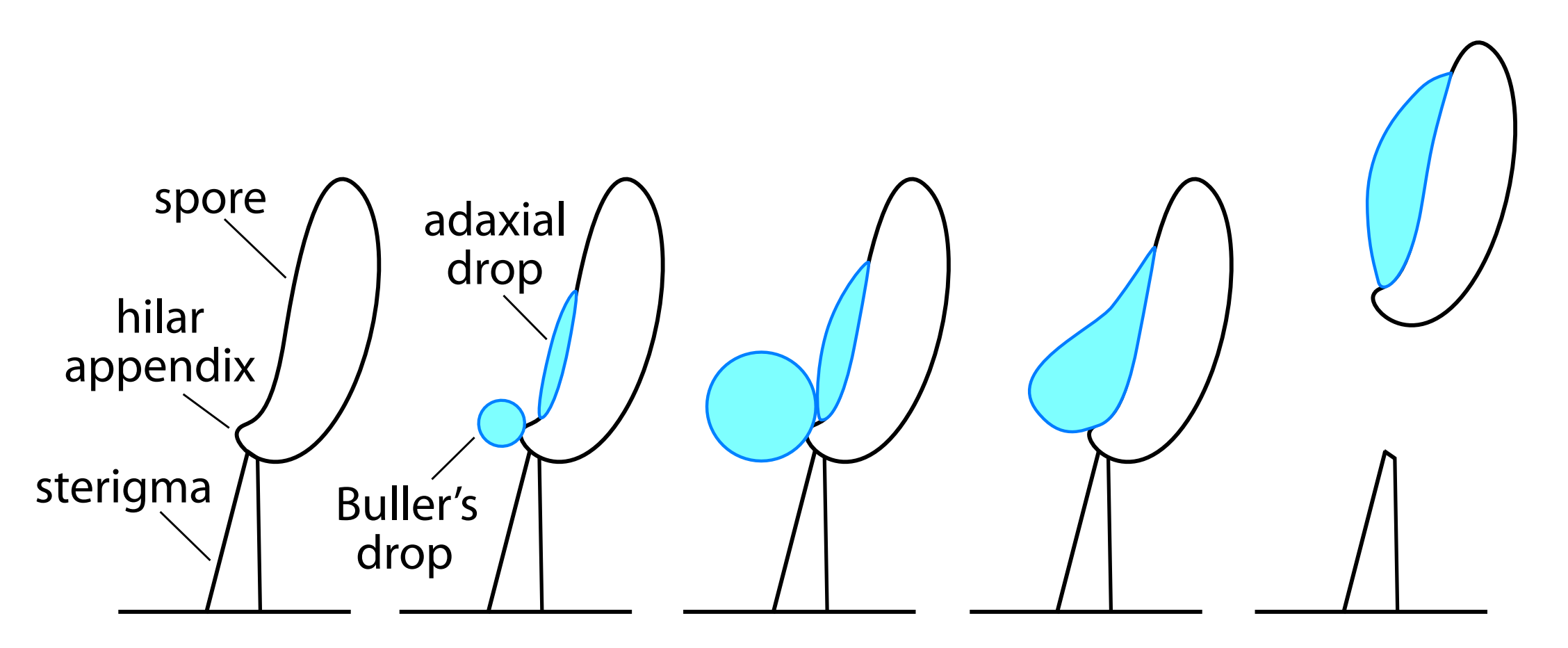surface tension catapults in mushrooms
author: Cory Simon
Fungi Basidiomycota have evolved a fascinating mechanism by which they discharge their spores. The mechanism exploits surface tension in water, which can be intuited1 as the tendency to minimize surface area.
Here’s how it works, aided by a visual pulled from Stolze-Rybczynski et al. [2], who took high-speed videos of these spores launching. The authors [2] dub this a “surface tension catapult”.

The spore starts off attached to a sterigma. From humid air, two disparate water drops form on the spore, one on the hilar appendix, “Buller’s drop”, the other on the face of the spore, the “adaxial drop”. Both drops accumulate water and eventually grow large enough to bump into each other. At this point, as a consequence of the large surface tension of water, Buller’s drop merges into the adaxial drop. The rapid flow of water induced by surface tension then provides2 enough momentum to propel the spore off of the sterigma.
I wonder what kind of biomimicry this could inspire in engineering.
References
[1] Marchand A, Weijs JH, Snoeijer JH, Andreotti B. Why is surface tension a force parallel to the interface? American Journal of Physics. (2011) 79(10):999-1008. DOI: 10.1119/1.3619866
[2] Stolze-Rybczynski JL, Cui Y, Stevens MHH, Davis DJ, Fischer MWF, Money NP (2009) Adaptation of the Spore Discharge Mechanism in the Basidiomycota. PLoS ONE 4(1): e4163. DOI: 10.1371/journal.pone.0004163
[3] Noblin X, Yang S, Dumais J. Surface tension propulsion of fungal spores. Journal of Experimental Biology. (2009) 212(17):2835-43. DOI: 10.1242/jeb.029975